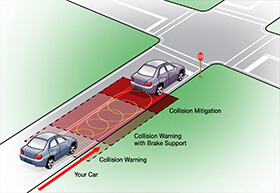The Evolution of ADAS Features in Cars: Enhancing Safety and Driving Experience
Introduction:
Advanced Driver Assistance Systems (ADAS) have become an essential component of modern vehicles, altering the way we drive and improving road safety. These innovations, ranging from collision avoidance to adaptive cruise control, have transformed the vehicle industry. This essay will go into the development and evolution of ADAS, emphasising their substantial impact on vehicle safety and driving experience.
The Discovery of ADAS:
ADAS systems have been under development for several decades, with researchers and automakers working to improve car safety. The advent of anti-lock braking systems (ABS) in the 1980s was a key milestone, setting the groundwork for more advanced technologies to follow. Since then, several ADAS systems have arisen, constantly evolving to handle various safety challenges.
Some of ADAS Features:
a) Adaptive Cruise Control (ACC):
This feature allows vehicles to keep a safe distance from the vehicle ahead while automatically altering their speed. Sensors and radar technology are used by ACC to monitor traffic and reduce the danger of crashes.
b) Lane Departure Warning (LDW):
LDW detects lane markings using cameras and sensors. It warns the driver if the car leaves the lane without signalling, assisting in the prevention of accidents caused by tiredness or distraction.
c) Blind Spot Detection (BSD):
d) Forward Collision Warning (FCW):
The Impact of ADAS:
The incorporation of ADAS elements has enhanced car safety and driving pleasure dramatically. These devices help drivers navigate difficult situations and provide an added degree of protection. ADAS elements have been shown to reduce traffic accidents, injuries, and fatalities.
Future Developments and Challenges:
ADAS features are evolving as technology develops. Automakers are attempting to improve the accuracy and reliability of existing systems as well as develop self-driving capabilities. However, difficulties like as weather, sensor limits, and human-machine interaction must be addressed in the future.
Conclusion:
ADAS features have revolutionised the car industry by increasing safety and improving the driving experience. These elements will play an important part in determining the future of transportation as technology advances and innovate. We should expect safer roads and a more comfortable driving experience for all as more automobiles include ADAS systems.
List of Some of the cars with ADAS features available in India are given below:
- HONDA CITY
- TATA HARRIER
- TATA SAFARI
- MAHINDRA XUV 700
- MG ASTOR
- TOYOTA INNOVA HYCROSS
Dear readers I appreciate you taking the time to go through my blog. Your participation and encouragement are greatly appreciated by me. I appreciate the chance to discuss my ideas with you. Keep checking back for more intriguing material soon!







Comments
Post a Comment